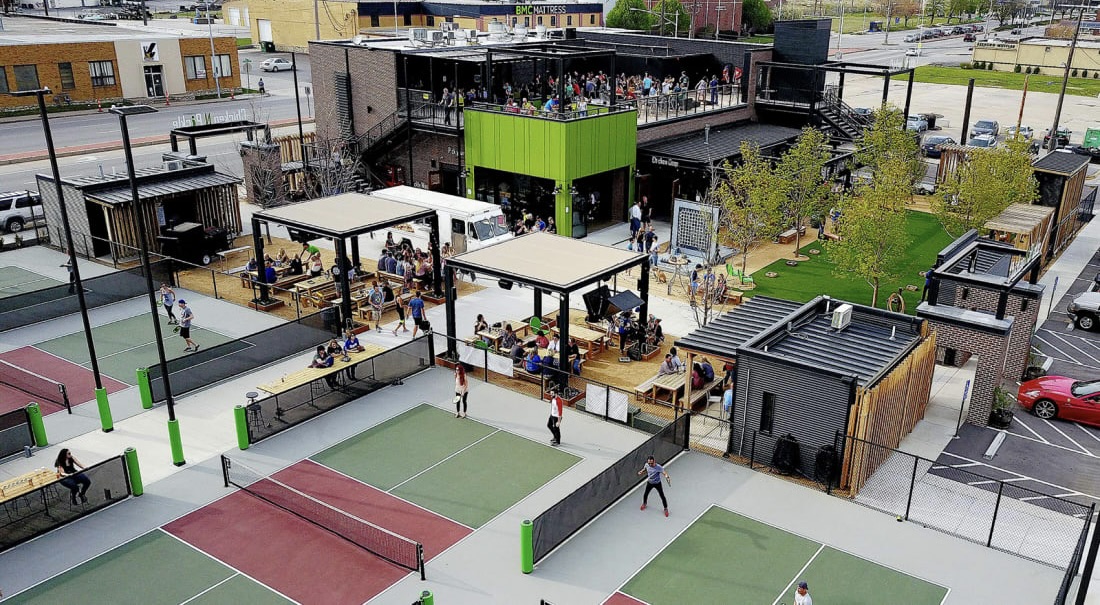
Having downgraded squash, LifeTime aims to build 600-700 pickleball courts across USA
By ALAN THATCHER – Squash Mad Editor
As Covid regulations are being relaxed in many parts of the world, it’s time to assess the future of squash and the impact of lockdown.
While padel and pickleball continue to expand at a phenomenal rate in various parts of the world, squash appears to be continuing to decline with signs of growth reported in very few territories.
The UK padel market is like the wild west, with numerous companies in a desperate race to build courts.
I am currently talking to padel companies from Spain and Sweden about building a new style of rackets club that will include squash.
I appear to be one of very few individuals holding such conversations and fighting squash’s corner.
I firmly believe that squash can thrive in a well-managed, commercial setting, and I will continue to fight to keep our sport alive despite depressing news of falling playing numbers across the world.
We have already seen the David Lloyd chain repurpose more than 100 squash courts into Blaze fitness studios across the UK.
In America, the LifeTime Fitness chain has just announced a massive investment project to add hundreds of new pickleball courts to their venues across the country.
Two years ago, LifeTime founder and CEO Bahram Akradi began the process of removing squash from numerous facilities across the States.
Around the same time, he fell in love with pickleball. A recent report by the CNBC website reports that since October the company has added 84 permanent pickleball courts at 30 clubs. Last month alone the chain reported that 7,000 new players picked up the sport at LifeTime venues.
Akradi says he plays pickleball every day and has lost 10 to 15 pounds in the process. His passion for the sport, coupled with the promise of long-term financial benefits, has led to pickleball spearheading a major refreshment of the company brand he launched nearly 30 years ago.
He revealed: “I love the sport because it’s the first sport I see bringing all of America together. It is accessible to everybody and easy to learn.
“By the end of next year, our plan is to deliver 600 to 700 dedicated pickleball courts across the country. So a LifeTime member can participate in events even if they’re traveling.”
He confirmed that LifeTime will invest $50 million to $75 million to add those courts before the end of this year.
It’s impossible not to contrast that level of investment for a nationwide pickleball expansion with the $40m raised by US Squash to build just one venue, albeit a spectacular one, the Arlen Specter National Center in Philadelphia.
Research conducted by Eduardo Alvarez, Toronto club owner and Squash Mad correspondent, reveals that more than 400 fitness facilities across North America have dropped squash during the past decade.
This makes it virtually impossible to find affordable squash facilities anywhere in the USA. In Canada, too, the figures are similarly alarming as squash fades away and new pickleball clubs open every month.
Several squash coaches in the mid-West are reportedly turning their back on the game due to falling numbers and switching instead to pickleball and padel.
Akradi told CNBC: “In my 40-plus years doing sports fitness, I’ve seen all kinds of stuff come and go — get the momentum and then lose it. This sport (pickleball), I don’t see that (happening). It’s just easier to play and it brings people together.”
As pickleball playing figures approach five million in the USA (compared to an estimated 200,000 playing squash), the Selkirk pickleball brand claims to be on track to sell more than a million paddles by the end of 2023.
In squash, many equipment companies are still struggling to renew stock levels after several Chinese racket manufacturers ceased trading during lockdown.
The growth of pickleball in America has seen an extraordinary commercial uptake, with chains like Chicken N Pickle and Smash Park creating franchises with restaurants, bars and family play areas. Many other businesses are following their lead and copying the format.
We are not seeing any such projects in squash, although the Open Squash club in New York is planning two new community facilities in Lower Manhattan and Brooklyn Heights, close to the successful Heights Casino club.
Finding reliable data concerning the effects of Covid on participation numbers in squash is a tough challenge.
Finding investment partners to develop squash is even harder.
Many investors looking at the fitness market regard the squash brand as “toxic” following decades of decline. Some have been stung by their involvement in the game and have vowed not to repeat the experience.
Against this background, squash has some serious lessons to learn if the sport is to recover.
However, most voices I hear in squash sneer at the emergence of these so-called “inferior” sports and fail to understand why they have left our game standing still.
To paraphrase LifeTime founder Akradi, squash needs to be affordable, visible and accessible.
Tomorrow, we talk to a court designer who aims to bring squash into the sunlight.















 Phone: (800) 737. 6040
Phone: (800) 737. 6040 Fax: (800) 825 5558
Fax: (800) 825 5558 Website:
Website:  Email:
Email: 






